Janice Moodie on her journey from Scottish 'upstart' to Solheim Cup star
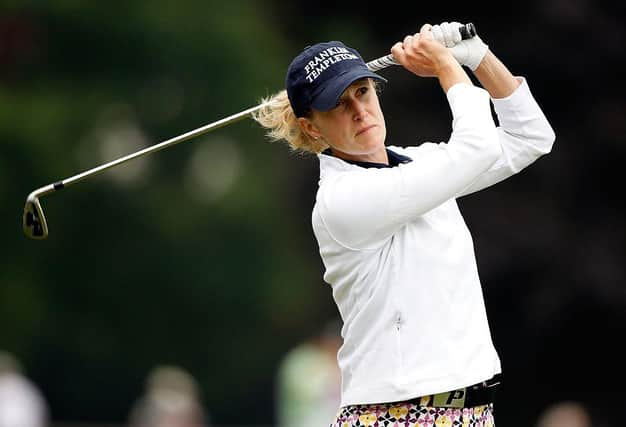

The 47-year-old partnered compatriot Catriona Matthew in a number of events, including another European triumph in the Solheim Cup at Barseback in Sweden in 2003.
Moodie has lived in the US for more than 25 years but enjoyed being back in Scotland as part of Matthew’s backroom team for the 2019 Solheim Cup at Gleneagles and is looking forward to helping out her compatriot again in this year’s edition in her home state of Ohio in September.
Advertisement
Hide AdAdvertisement
Hide AdIs it right that you were taught by your mum, Christine, as an 11-year-old?
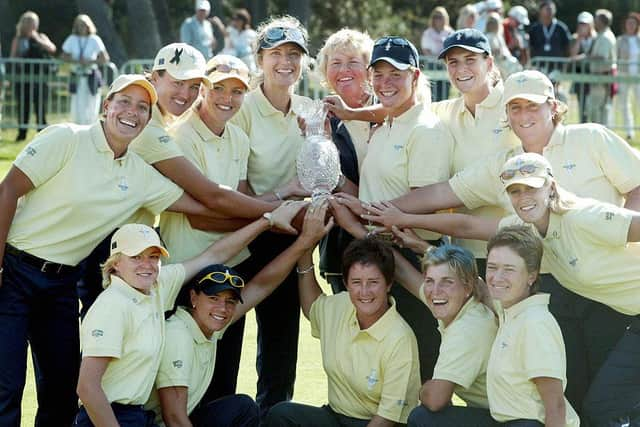

JM: I don’t know if I would say taught. I would maybe say dragged up to the golf course to play with her because she had nobody else to play with (laughing). I eventually didn’t mind that and the first person who taught me was Bob Collinson, who was the head pro at Windyhill.
So when did you think you could be destined for a career in the game?JM: You know, it’s funny you should ask that as I remember the Coca-Cola Schools’ Tournament and I remember being on a bus with Andrew Coltart, of all people. I was probably 15 or 16 at the time and it was the first adventure that made me think I could do this as a profession.
Before that happened, though, you worked in Greaves Sports in Glasgow and also a nightclub as well?
JM: Yes, correct on both counts and I also worked at a Safeway, all of which was at a time when I was trying to support my amateur golf addiction.
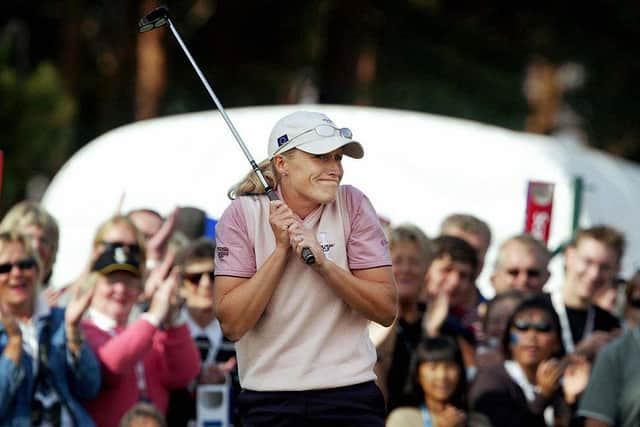

How difficult was it trying to make headway at that time as you combined practising and playing with those jobs?
JM: It was a different time back then. Now, everybody is so focused on their mental coach, their strength coach, their nutritionist. We just played golf and just played as hard as you could to try and win. It wasn’t hard because it was what I wanted to do.
You were due to college then your mum had a brain aneurysm. How difficult was that at the time?
Advertisement
Hide AdAdvertisement
Hide AdJM: You know, it was difficult. It happened a year or year and a half before I actually went to college. I knew at the time my dad, John, was retired and I knew that he had everything taken care of. I eventually went to college and, as a result of that, was able to help out my family a different way by giving both my mum and dad experiences they wouldn’t have had if I hadn’t gone to the States.
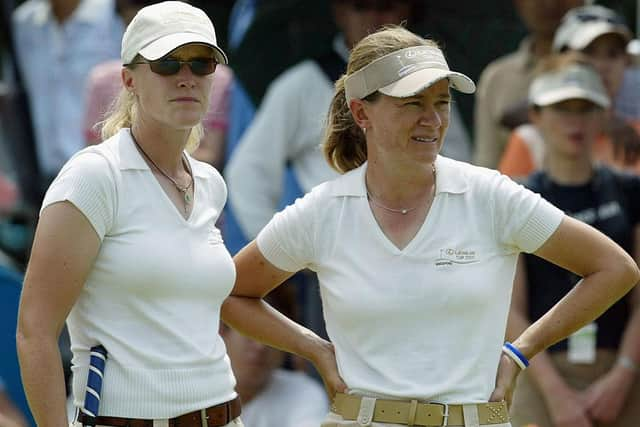

Your biggest individual success as an amateur was probably in the 1992 Scottish Women’s Championship, beating Elaine Farquharson at Royal Aberdeen. What do you remember about that?
JM: I was kind of the young upstart, I guess, and was up against Elaine on her come course. It was a spark for better things to come.
You made two Curtis Cup appearances and beat the legendary Carol Semple Thompson in the final singles in 1994 to retain the trophy for GB&I. How special was that?
JM: It was wonderful. I still get goosebumps just thinking about it. You beat somebody down the last in the last last match with everybody watching and you hit it into a foot and you are given the putt. Something like that can either make or break you and, for me, it created a lifelong friendship between Carol and myself.
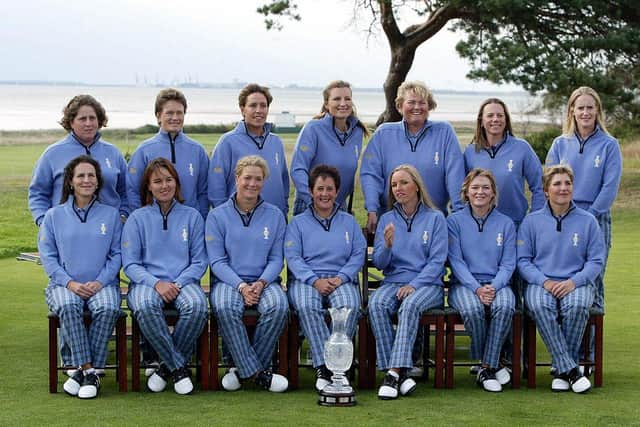

You made quite an impression during your stint at San Jose State University, winning 12 collegiate events?
JM: I wasn’t exactly very academic, having left school when I was 16. But, after getting in there, I took on the academic side as though it was my job as I wasn’t used to having much personal time to myself through working and playing amateur golf in Scotland. My mindset was that ‘okay, I am here for golf but studying is my job’ because, if I didn’t get the grades I needed, I could have found myself being thrown out.
Twelve wins at any level is pretty impressive, though, wouldn’t you say?
Advertisement
Hide AdAdvertisement
Hide AdJM: Mark Gale, my old coach there, was a retired aviation guy. He was a leader and he helped us become good players. That was one of his qualities whereas now I think it can be a case of ‘hey, you are on my team and this is how you are going to play golf’. He wasn’t in the robotic mould and was the perfect match for me.
On the back of that success, was turning pro in 1997 a no-brainer?
JM: To be honest, I was probably ready in 1995. I had a very good friend through Franklin Templeton who ended up being one of my main sponsors. He said that there are certain things people can’t take away from you and said that would be the case if I got a degree. That was one of the best pieces of advice I have ever received. Did I ever do anything in psychology? No. But, you know what, it gave me a very good stepping stone before hitting the tour at 24 rather than 22.
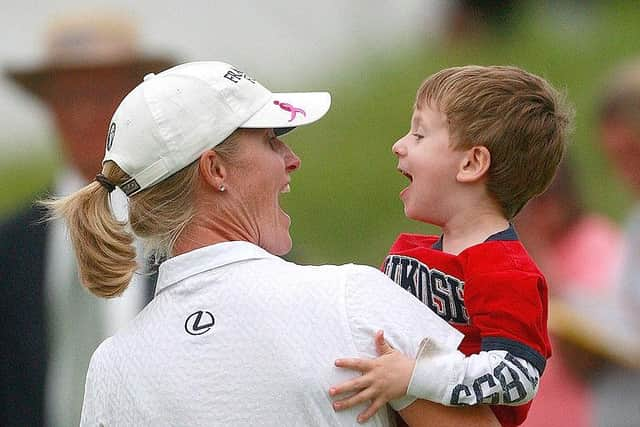

In your first season on the LPGA, you recorded three top-10s and finished second to Se Ri Pak in the Rookie of the Year race. It looked as though you felt at home straight away?
JM: My first year was very challenging and people don’t really understand that. I didn’t have a full card. I was a conditional player. I had to play in Monday qualifiers for just two spots and, luckily, I came through two in a row and was able to leap ahead. The whole year the hardest part was getting myself into a frame of mind where I knew I was going to be able to tee it up every week versus having to be there for a Monday qualifier starting at 8am.
You landed your breakthrough in the 2000 Shoprite LPGA Classic, becoming just the second Scot after Kathryn Imrie to win on the circuit. How did that feel?
JM: It was phenomenal. Luckily, I think I had a four-shot lead going down the last (laughing) because my knees were knocking and I hit it left then right down this par 5 before having a couple of putts to win it. That was an unbelievable feeling.
How did it feel to make your Solheim Cup debut on home soil at Loch Lomond in 2000?
Advertisement
Hide AdAdvertisement
Hide AdJM: That whole event was just amazing. From Carin Koch holing the final putt, the atmosphere and even the rain and mud, which was unbelievable. In fact, I think there are probably still a few shoes buried under the soil. That week and Loch Lomond has a special place in my heart, for sure. It was tough for my mum and dad with all the crowds, but it was great for them to be there and I am sure they would have been enjoying a whisky and beer - on me, as usual (laughing) - in a tent somewhere that Sunday.
You were then controversially overlooked by Dale Reid for the 2002 Solheim Cup despite adding a second LPGA win by seven shots in the Asahi Ryokuken International Championship. How disappointing was that?
JM: I think my philosophy on that is that when you leave yourself in a position where you need a pick, you can’t really grumble if you miss out. Dale picked what she thought was her best team and I don’t blame Dale for not picking me. Even at the time, I felt that way. She had to pick the players she felt could do a job for her. Take what Catriona Matthew did for the 2019 match at Gleneagles. She picked Suzann Pettersen and that turned out to be one of the best picks in the event’s history. If she hadn’t played well, Catriona would have been criticised but both of them came out of that event sitting at the top of the mountain.
You then rewarded Catrin Nilsmark for a captain’s pick in 2003 by picking up three-and-a-points, including two wins with Catriona and a singles success at the top of the order. That must rank pretty high in your career achievements?
JM: My Solheim Cup record is very good. It’s not something you actually think about at the time, but I definitely think the amount of match-play golf I played as an amateur certainly helped.
You also partnered Catriona in the inaugural Women’s World Cup in 2005 in South Africa. Was that another special memory?
JM: Yeah, that was great. I really enjoy her company and I think she enjoys my company. When we played together, we were both out there to do a job. She is so confident and so relaxed. Nothing bothers her and her demeanour is something I tried to replicate, especially in my amateur days.
What did it mean to be part of Catriona’s backroom team for the 2019 Solheim Cup success at Gleneagles?
Advertisement
Hide AdAdvertisement
Hide AdJM: I was the banana person (laughing). I was the gofer and, to be honest, I had no problems about that. Anne Van Dam had been on my Junior Solheim Cup when I was captain in 2013, so I sort of looked after her that week. It was a wonderful week and both Catriona and Suzann were phenomenal. You couldn’t have scripted it any better.
You were inducted into the National Golf Coaches Association (NGCA) Hall of Fame in 2004. When did your switch to a coaching career kick in?
JM: I never got into coaching as much as I would have liked to. Three years ago, I had back surgery and, as well as it being hard to swing a golf club, it was also hard to stand and give lessons. Also, having two boys - Craig, a 14-year-old, and 10-year-old Matt - keeps me busy.
What are you up to these days on the golf front?
JM: Catriona has asked me to be a helper again at the Solheim Cup. Like a lot of people, the last year has been mostly sitting in the house, learning to cook, putting on some weight and taking off some weight. All of last year we were doing home schooling and I became a teacher, never mind a golfer. Seventh grade maths, don’t even talk to me about it as I don’t have a clue.
How long have you been in Cleveland, Ohio?
JM: When Craig turned six, this became our main base and he’s now 14, so the last eight years at least. We used to switch between the hot in Florida and cold here before then. I am getting married in June to my fiancée Rich Porter. We are the perfect “Brady Bunch” with five kids between us.
And there’s still enough of a Scottish accent there to remind people where you are from?
JM: Oh, just get a few beers in me and it all comes out (laughing).
Tell us about the Janice Moodie Trophy and is it still taking place at Windyhill?
Advertisement
Hide AdAdvertisement
Hide AdJM: I think so. It was a great little thing and it did well for a while on the SLGA junior circuit. Hopefully when I finally get home again, I can see what is happening with it now.
From being dragged up to Windyhill as a youngster, you went on to enjoy a great career. What does that mean to you?
JM: As you get older and heading towards the half century, you look back and I am really at the point where I love being the person giving back and that I have the means and wherewithal where I can give back. If somebody wants to reach out to me for advice, I have no problems giving it as I feel there have been so many people along the way who have given me their time or their help to let me get to where I am at. Renowned golf writer Lewine Mair, for instance, helped me get to college in the US. Those are the little stepping stones I will never forget and I am grateful for.
Is there anyone in particular you feel you have helped carve out a career in the game?
JM: Iona Stephen, who is now doing some commentary work for Sky Sports, was somebody who got in touch with me when I was ending my career through Kevin Craggs, who was teaching Catriona Matthew at the time, to see if I needed a caddie. I said ‘absolutely’ and she came up to me a few years ago and said, ‘I can’t thank you enough as I had such a good time and that empowered me to stick with golf and be where I’m at now’. I was like, ‘wow, I felt that I hadn’t done anything’. But that meant a lot to me as it’s about being who you are, being genuine with people and helping inspire people.
A message from the Editor:
Get a year of unlimited access to all of The Scotsman's sport coverage without the need for a full subscription. Expert analysis, exclusive interviews, live blogs, and 70 per cent fewer ads on Scotsman.com - all for less than £1 a week. Subscribe to us today https://www.scotsman.com/subscriptions/sports
Comments
Want to join the conversation? Please or to comment on this article.
